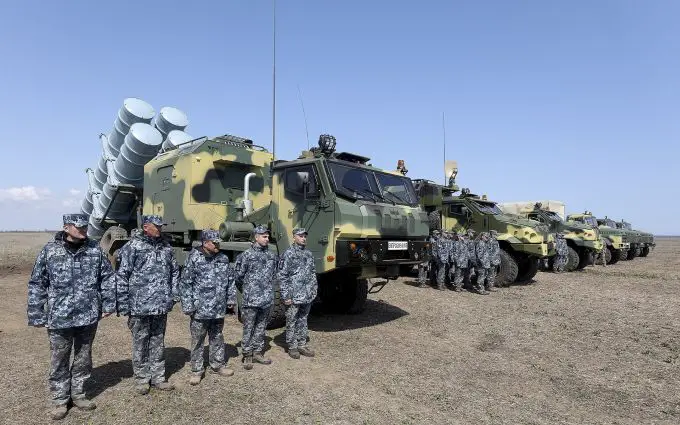Lieutenant General Ivan Gavrilyuk, the Deputy Minister of Defence of Ukraine, stated in an interview with a publication, ‘ArmyInform’, that the country is now working on a new modification of the missile intended for the Neptune complex. Currently, efforts are being made to develop what is referred to as the “long Neptune,” he said.
According to the journal, which sources its information from specialised media, it entails modifying the anti-ship missile R-360 so that it can hit ground targets. The maximum range such a missile can reach is around 400 km, and it can carry a warhead of 350 kg.
It is also speculated that the new missile for Neptune uses thermal imaging homing technology to seek and lock on to a target based on an image that has been pre-loaded.
There is a lack of clarity over whether or not the upgraded Neptune missiles can fly the varied flight profile that missiles such as the Storm Shadow do to avoid detection and air defences.
Weighing 870 kilogrammes, the R-360 missile, a part of the “Neptune” anti-ship missile system, can deliver a warhead that weighs 150 kilogrammes. As far as the launch range is concerned, it can travel up to 280 kilometres, its speed is around 900 miles per hour, and the flying altitude above the wave crest can range anywhere from three to ten metres. It is possible to launch up to 24 missiles at the same time. There are consistent reports from the Russian Ministry of Defence that they have successfully intercepted and destroyed Ukrainian “Neptune” missiles. In the middle of November, for instance, Russian air defence systems were able to destroy two missiles of this type when they were flying over the Black Sea close to the shore of Crimea.

The Long Neptune Missile has been mentioned before. At the end of August, Western media and Yuri Butusov, a military blogger from Ukraine and the editor-in-chief of Censo, reported that a new weapon is being developed by reworking the Ukrainian Neptune missile. According to Butusov and the specialised journal ‘The War Zone’ based in the United States, the Ukrainian military industry has been working on modifying the R-360 Neptune missiles over the past year so that they can be used not only against ships at sea but also against terrestrial targets.
During September, numerous reports suggested Ukraine might have built its long-range missile, which, in theory, could reach even Moscow. A target was struck from a distance of 700 miles, according to statements made by the President of Ukraine, Vladimir Zelensky, on August 31. Alexey Danilov, the Secretary of the National Security and Defence Council (NSDC), uploaded a video of the missile launch to his social networks on the same day. In addition, the video was made available by the Luch Design Bureau, the most prominent rocket equipment developer in Ukraine and responsible for creating the Neptune System.
It is believed that the modified R-360 missile was the one that successfully targeted the Russian S-400 anti-aircraft missile system on August 23. This S-400 system was located near Cape Tarkhankut, the most western point of the Crimean peninsula. It is around 273 and 306 kilometres from the Ukrainian shore. After some time had passed, the Secretary of the NSDC, Danilov, stated that a missile from Ukraine had struck the Russian air defence system, but he refused to specify which missile it was.
According to him, this is the new product that Ukraine has developed, demonstrating that it is flawless. He also mentioned that this advancement in the Ukrainian defence industry was made as part of the missile programme approved in 2020.
Although the use of Neptune against ground targets was previously unknown, the use of anti-ship missiles to attack land targets is not unique to Ukraine. Russia has been using modified anti-ship missiles consistently to bombard Ukraine.
Ukraine can strike Russia deep inside
The modified Neptune missiles provide the Ukrainian Armed Forces with new opportunities. Their access to Western weaponry, such as Storm Shadow missiles, is contingent on their usage strictly to defend Ukrainian territory and not to strike over the border.
Even though it is highly unlikely that these missiles will be used to strike a heavily populated location directly, Ukrainian drones have in the past crashed into government buildings in Moscow. The warhead of this missile is more powerful than drone-borne bombs and can cause more damage.
That said, it is not out of the question that Moscow may respond to the missile more aggressively.
